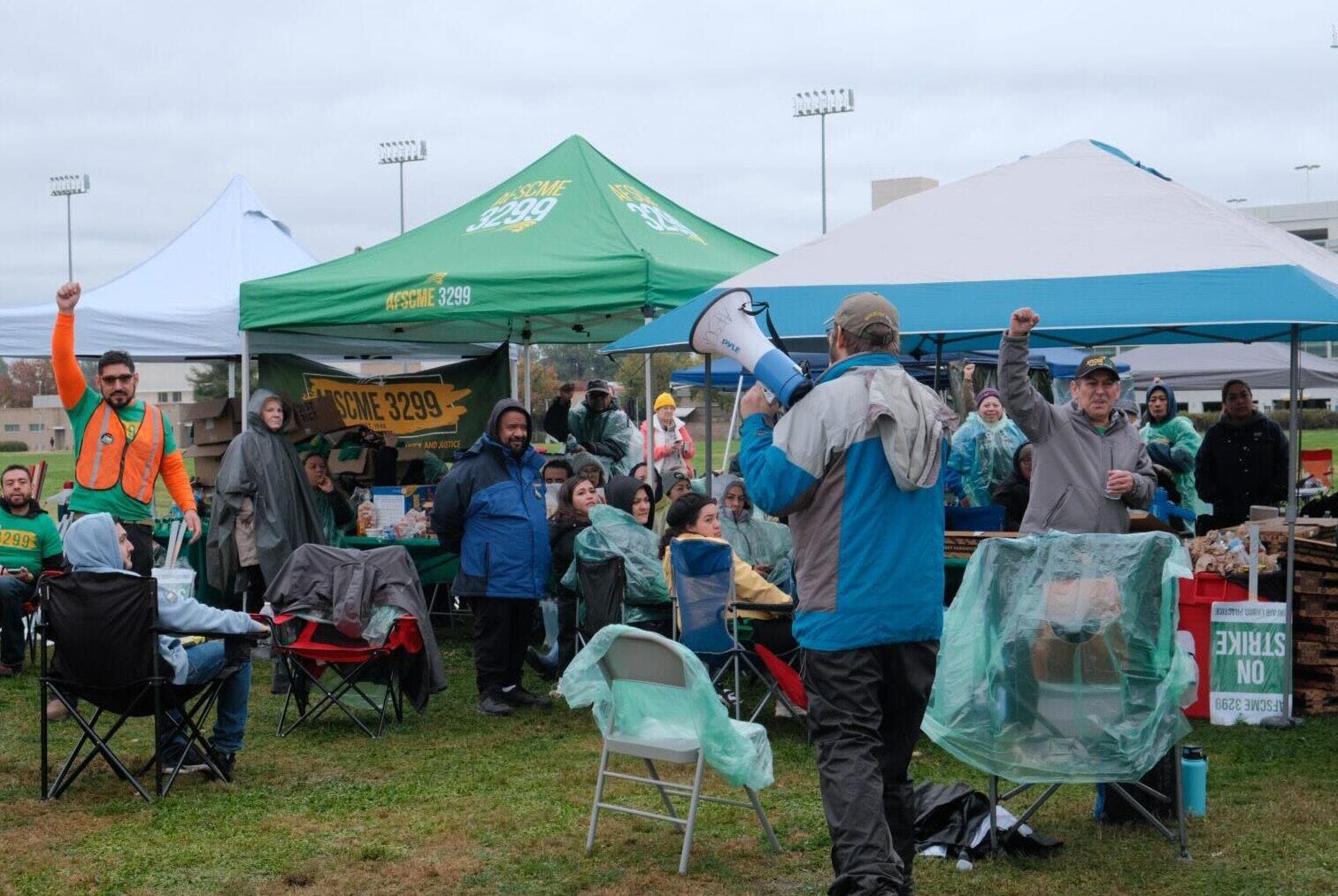






The news came as universities across the country brace for changes in federal policy in education spending
BY VINCE BASADA campus@theaggie.org
Te University of California announced a systemwide hiring freeze on March 19, citing higher education policy changes from the Trump administration and cuts to the UC’s budget allocation from the state.
Te news was announced by
UC President Michael V. Drake, who said the freeze will be part of the system’s wider efforts to manage costs and conserve funds. Te UC is facing $271 million in proposed cuts from the state of California for the 2025-26 academic year.
“[Our] eforts have allowed us to stave off some of the immediate and projected fnancial impacts — but not all,” Drake said in a statement.
“As we face funding reductions at both the state and federal levels, the Chancellors and I are preparing for significant fnancial challenges ahead.”
Drake, who is set to step down at the end of this academic year, has also directed all UC campuses to initiate other costsaving measures, which he acknowledges will vary from
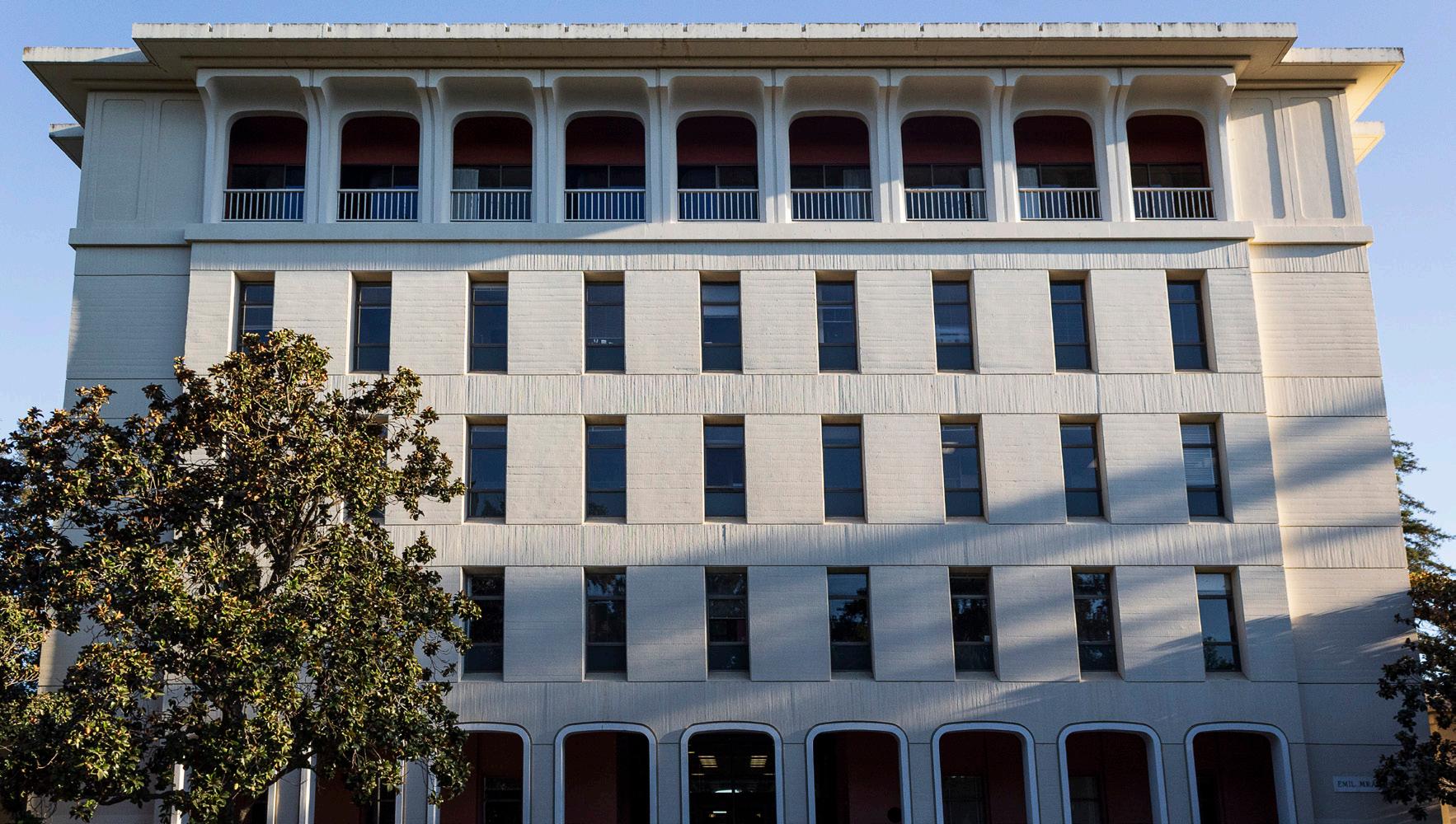
location to location. They include delaying maintenance and restricting business travel.
Te austerity measures will afect all nine undergraduate campuses, UC San Francisco (a graduate medical school) and several other afliated locations.
In a message to UC Davis employees and stafers, UC Davis Chancellor Gary May said that he had directed Human Resources to design a new “centralized
hiring process” for staf positions; A centralized hiring review is already in place at UC Davis Health. May also noted that he anticipates fewer faculty hires than in recent years.
“We know this news is unsettling, and many of you may have questions about how this will impact your teams and departments,” May said in the statement. “Please know that UC Davis is committed to navigating
What does the future of Diversity, Equity and Inclusion look like at the University of California under Trump?
As educators interpret recent executive orders and Department of Education guidance regarding DEI, the UC system responds and provides system-wide guidance for students
BY KHADEEJAH KHAN campus@theaggie.org
A “Dear Colleague” letter from the United States Department of Education on Feb. 14 threatened federal funding for schools’ race specifc programs, including scholarships, fnancial aid, dormitory floors and graduation ceremonies. Now, as community members are interpreting the impact of new guidelines, the University of California has provided systemwide guidance.
The letter followed President Donald Trump’s Jan. 20 executive order, which called for the termination of Diversity, Equity and Inclusion (DEI), Diversity Equity, Inclusion and Accessibility (DEIA) and environmental justice positions, describing them as “illegal and immoral.”
Te law is clear: treating students diferently on the basis of race to achieve nebulous goals such as diversity, racial balancing, social justice or equity is illegal under controlling Supreme Court precedent,” the letter reads. “The Department will vigorously enforce the law on equal terms as to all preschool, elementary, secondary and postsecondary educational institutions, as well as state educational agencies that receive fnancial assistance.”
While the “Dear Colleague” letter followed the 2023 U.S. Supreme Court decision which barred the use of race in admissions decisions, this letter targets programs not included in the 2023 ruling, including dormitory f oors, graduation ceremonies and scholarships.
UC Davis Education Professor Michal Kurlaender described the letter as “overreach on the interpretation” of the 2023 Supreme Court decision. Kurlaender’s work focuses on ways to make the pathway into college more equitable amidst racial and socioeconomic inequity. She said that racial afnity programs are one step closer to achieving that equity.
“While we might think college is just about taking classes and completing, it turns out, it is not,” Kurlaender said. “Students experience college in a number of ways, and they need to feel psychological safety. Tey need to feel like they can navigate the complex system with deadlines and fees and any number, registration and constraints administrative burdens. Tey also want to feel like they see themselves in the
curriculum.”
Kurlaender said students from historically marginalized backgrounds pursuing higher education, often coming from unequal K-12 environments, frequently experience imposter syndrome and isolation. While California’s K-12 student population is 80% students of color, Kurlaender noted that same diversity is often not represented in higher education environments. She believes it is essential to protect aspects of student life, including the beginning of the student experience through themed dormitory foors, all the way to their graduation to “celebrate the accomplishment of completion.”
At UC Davis, the Center for Chicanx and Latinx Academic Student Success, Center for African Diaspora Student Success, Native American Academic Student Success Center, Middle Eastern, North African and South Asian Student Resources and more have held graduation ceremonies celebrating graduating students from various communities. Tese centers will continue to hold their 2025 graduation ceremonies according to their websites.
A Feb. 20 statement signed by UC President Michael Drake responded to the “Dear Colleague” letter.
“We encourage UC staf to continue with their work in alignment with all applicable state and federal laws,” the statement reads. “We will continue to ensure that every Californian has the opportunity to join the UC community and feels welcome at our campuses.
We are committed to ensuring that our campuses beneft from the talents and aspirations of all, as we create a vibrant workforce for future generations.”
On March 7, the UC Ofce of the President (UCOP) released an FAQ page addressing how DEI might be impacted at the UC.
When asked whether or not the UC is planning to scale back or eliminate DEI efforts or positions, the FAQ page states that “UC remains fully committed to equal opportunity and broad participation in its education, employment and contracting opportunities,” in compliance with Article 1, Section 31 of the California Constitution. In regards to DEI titles, the statement wrote that for staff employees the job titles on UC Career Tracks may be updated, while academic job titles will remain the same.
In response to questions regarding outreach and pipeline programming by race and sex, the UC will continue to use informational outreach strategies for those groups, with the programming being accessible to all students.
Individual campus departments ofering courses or programming “related to diversity, equity, inclusion, accessibility and belonging” can continue to do so “as long as those programs are open and available to all,” according to the UCOP website. Tese programs include Ethnic Studies departments, speaker series, research institutes and more.
The statement also addressed affinity-based registered student organizations (RSOs), ofering support to RSOs who continued to comply with current student organization rules and regulations, as well as being accessible to all students. Te same applies to resource programs and centers for specifc identity groups, according to the statement.
EXECORDER on 8

these challenges together as a community, guided by compassion and transparency.”
In a February communication from UC Davis administration to stafers, university leaders said that UC Davis is facing a $37 million reduction in state funding. Additionally, the report noted that unless signifcant action is taken, UC Davis’ budget defcit will more than double, up from $40.3 million at the
close of fscal year 2024-25 to approximately $90 million by the end of 2025-26. Te announcement comes as colleges and universities across the country are bracing for cuts in higher education spending and aid from the federal government amid calls from President Donald Trump to abolish the Department of Education.
AFSCME Local 3299, the UC’s largest labor union representing some 35,000 employees, called the announcement representative of “more of the same institutional failure.”
“UC has efectively had a hiring freeze in place for the past four years, and its Chief Financial Ofcer acknowledged as much when he told the Board of Regents in 2023 that staf vacancies had tripled since the pandemic,” AFSCME Local 3299 President Michael Avant said.
Te university has clarifed that employment ofers made by the UC on or before March 19, 2025 will be honored.
Tis is a developing story. Check back for more updates.
Students and faculty discuss the ramifications of Trump’s recent actions against national parks
CRYSTAL CHEN / AGGIE
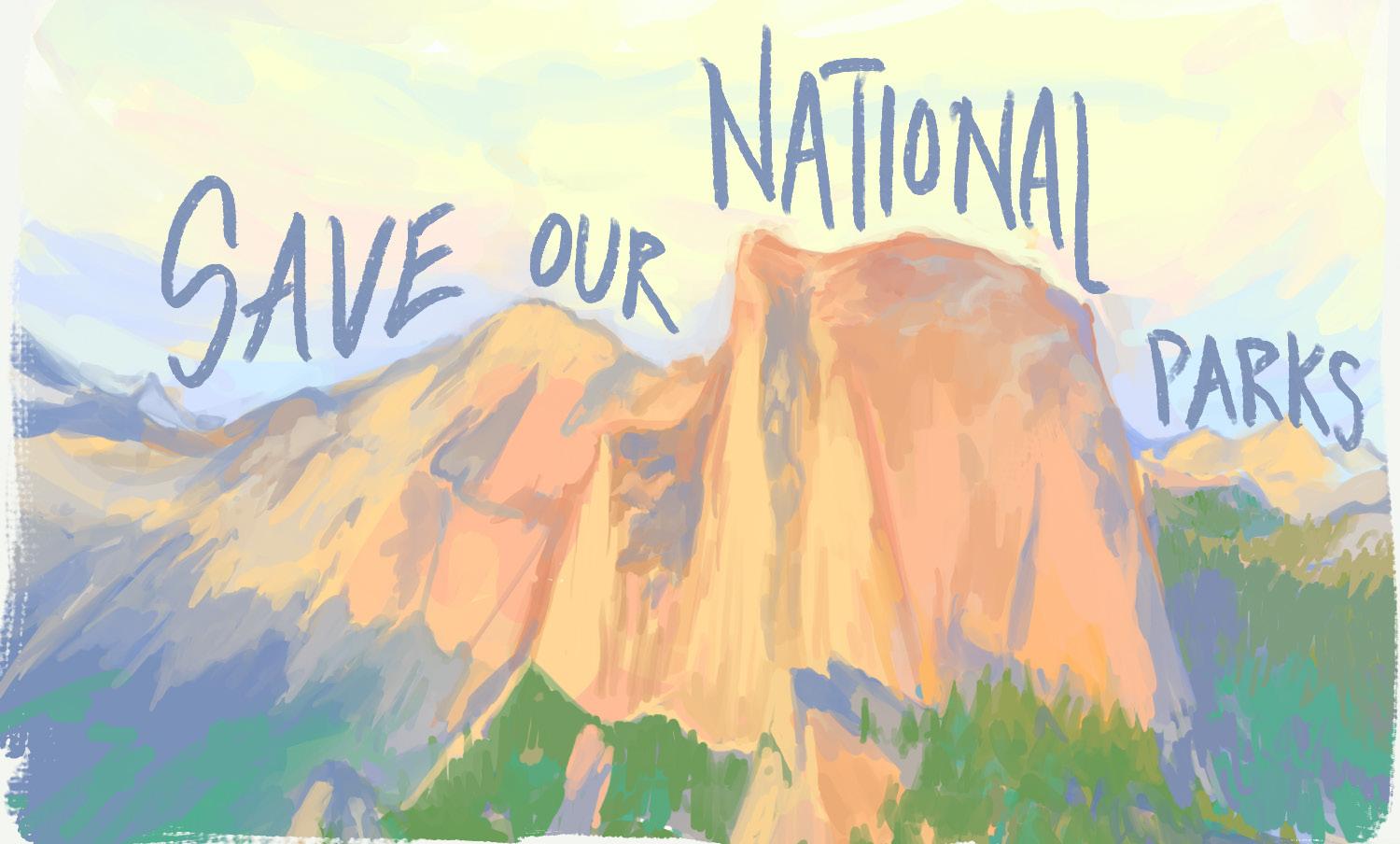
BY JENEVAH HARRISON features@theaggie.org
As the busy season for national parks approaches, concerns are rising over the impact of recent government actions on park preservation and management.
The Trump administration’s decision to cut approximately 1,000 National Park Service employees in February 2025 has sparked debate about the future of these treasured landscapes. Critics argue that these cuts are part of a broader strategy that threatens the integrity of America’s natural spaces.
Jill Laufer, a UC Davis Ph.D. candidate, believes that the move is less about efciency and more about creating instability.
“[It is a] ploy to generate headlines — a nanny state for chaos,” Laufer said. “Trump’s overall motive for this act is most likely to encourage citizens to come together to protect the national parks and remove government interference altogether. However, the politics of it is chaos — to seem like they’re doing something — and essentially burn it down.”
Laufer points out Trump’s attempt to limit the amount of federal workers as a ploy to minimize the government and increase his own power, which has been frequently discussed during his past and current presidencies.
Tis decision from Trump could potentially also lead to more dangerous parks, which Austyn Gafney discussed in an article for the New York Times.
“Among those whose jobs were eliminated were river and wilderness rangers, scientists who help keep forests healthy to minimize fre danger, analysts, attorneys and administrators,” the article reads. “Many were trained to assist frefghters, possessing skills that are required each summer as climate change causes bigger and more severe fres.”
Without these essential roles of workers in our national parks, Gafney argues that the safety of visitors could be afected. Tis will likely include unsupervised activity resulting in an increase of accidents due to an overall lack of park maintenance and supervision.
Kalen Hale, a first-year environmental policy analysis and planning major, also voiced concern over the implications of these layofs. Hale emphasized the essential role national parks play in environmental sustainability and local economies.
“National parks are the preservation of the natural environment, and [they] can greatly support the surrounding land and soil due to insects, animals, pollen and so much more,” Hale said.
“Considering all of the national parks in America, it is valid to say that they greatly support the world’s climate.”
Beyond environmental concerns, the layofs raise pressing questions about park maintenance and visitor education.
“To put it simply, if workers of any kind are fred, how will things be able to run?
NATIONALPARKJOBS on 8

Students share their experiences and screenprint concepts from winter 2025
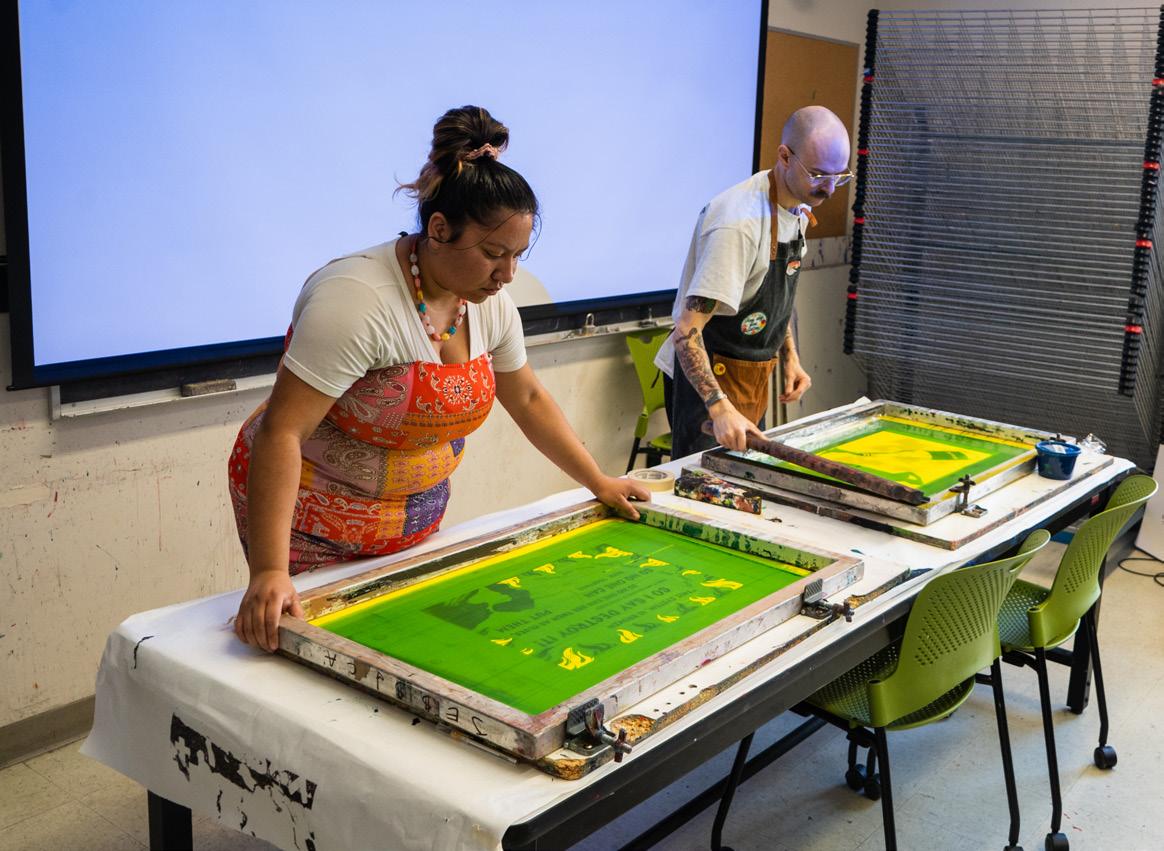
BY EVELYN SANCHEZ features@theaggie.org
Located in the heart of Hart Hall, one unique classroom on the UC Davis campus has a closet full of paint buckets and tape. Colorful posters line the walls and wire drying racks reach the ceiling to store the student-created posters. Te three-hour-long class might be tiring, but the skills it gives to students are invaluable.
Not restricted to just Chicana/ Chicano studies majors, the CHI 172: Chicana/o Voice/Poster Silk Screen Workshop course presents students with a quarter-long opportunity to screen print posters in the traditional way. Te art form has recently gravitated toward the digital interface, but Professor Gilda Posada provides students with the opportunity to engage with a historically political art medium by utilizing the techniques used since the 1960s.
For most students, the class presents a completely new and unique experience.
“I picked this class because it was a good outlet,” Devin Bangayan, a second-year design major, said. “[Screen printing] is a technique I haven’t learned before. In design, there’s a lot of computer and digital work, and working in [physical] layers for print [was new].”
Bangayan was previously in the military and used his experiences while enlisted to cite inspiration for his poster.
“There’s a big culture around alcoholism and I wanted to talk about that,” Bangayan said. “[Tis poster] is a healing piece to put out there because it’s something I know a lot of people have dealt with, and I want to represent it in an understandable way.”
Gilda Posada, the current instructor for CHI 172, shared about the history of the course.
Te silk screen courses in Chicana/ o/x Studies have been taught in the Department since 1989,” Posada said. ”I am the third instructor to have taught this course after Malaquias Montoya and Carlos Jackson.”
Posada began silk screen printing when she took the same class herself as a Davis undergraduate student. She received a Bachelor of Arts degree in Chicana/Chicano studies and comparative literature at UC Davis and later received a Master of Arts and Master of Fine Arts in social practice and visual critical studies at the California College of the Arts. Currently, she is working on fnishing her Ph.D. at Cornell University as an all but dissertation candidate in art history and visual studies.
Her disciplines and mediums extend to digital textiles, screen printing, exhibition curation and critical art historical writing.
“I have been printing for 18 years now,” Posada said. “I very much enjoy passing down this method to students who continue to use it to uplift their communities through their messages in their art.”
Te structure of the class revolves around the creation of three posters. Silk screen printing, in the way Posada teaches it, involves the manual cutting of a stencil, which is then coated in
Amidst ongoing backlash, UC Davis community affirms importance of month-long observance
BY LAILA AZHAR features@theaggie.org
In 1978, a school district in Sonoma, California organized a weeklong celebration of women’s contributions to history, including presentations in schools and a parade. Tis celebration took place during the week of March 8, in order to coincide with International Women’s Day, a holiday originating from the Socialist Party of America.
Te idea soon caught on with school districts and communities across the country, and in 1980, President Jimmy Carter proclaimed the week of March 8 “National Women’s History Week.” A few years later, after advocacy by the National Women’s History Project, the United States Congress expanded this to “Women’s History Month.”
supposed to be about history and she just talked about gender and race,’ Gettelman said. “But that’s history.”
In recent quarters, she said that students in her classes have resonated with discussions about the 14th Amendment, especially as it relates to Dobbs versus Jackson, the Supreme Court case that overturned Roe versus Wade.
“During my lecture, I went through all the parts of the 14th Amendment and said [Dobbs] isn’t just about this one specifc issue, it’s about pushing back against the Constitution,” Gettelman said. “It will go from abortion to marriage, and I bring up Loving [versus Virginia] — and I’m really shocked by how many of my students don’t realize that interracial marriage was illegal.”
Her classes highlight the role everyday women have played in shaping history.
the South following the Civil War. Tere’s not often a lot of talk about ordinary women, and yet they’re often the impetus for change. It’s just easier to remember the person who’s in the lead.”
Ella Fodor, a second-year wildlife, fsh and conservation biology major, said learning about women’s history can help students navigate current events.
“Understanding historic precedent can help you see the misogyny that underlies a lot of things, whether that be online discourse or federal policy,” Fodor said. “But it can also give you hope and inspiration to see how women of the past have resisted these systems for years and years before us.”
emulsion and exposed to a screen, after which the ink is pushed through a screen by a squeegee and repeated for each new additional color.
For simplicity’s sake, the students’ frst posters only have one layer and one color. Every following poster becomes more complicated and adds a new layer and resulting color, adding dimension and expanding students’ limits with the medium.
Bangayan’s poster had a rich selection of colors that featured a beer bottle tipping over into a splash silhouette of a saluting soldier. Te bottle read “Coping Isn’t Healing” and the splash had blocky, red letters that said “Life Over Career.”
“I kind of expected a good measure of artwork and making stuf politically related, but I didn’t think I’d make as many friends or feel comfortable being the only Black person in the class,”
Faderera Popoola, a fourth-year African American studies major, said.
Popoola’s frst poster focused on Diversity, Equity and Inclusion and other systems being taken away or threatened by current legislation. She remarked that she found inspiration in previous posters that said “I Am a Man” used during the civil rights movement and experimented with the phrase by substituting it for “I am Employable.”
“I wanted to play of that saying by saying ‘I am Employable’ to say that however I look or come across, I am employable,” Popoola said.
Her poster featured a Black woman with loose, 4D hair and hoop earrings holding a sign that read “I am Employable” where the only color used was black. Te hair was textured by flling in the silhouette with ink and before letting it dry fully, Popoola used a scrunched-up tissue to imprint the soft fabric onto the plastic, resulting in a hair-like texture.
Adding texture to a screenprint poster is always challenging due to the plastic stencil it must be drawn — or rather, cut — onto, but Popoola used her creativity to fashion a memorable solution.
“To me [the poster subject’s attire] is professional, but to others it is not,” Popoola said. “[She] is not necessarily me but just the Black person. Regardless of what you’re wearing, you’re still employable.”
Posada also explained the roots of the course stemming from the civil rights movement.
Te course is rooted in a long history of community social art praxis that Chicana/o/x artists and many other [Black, Indigenous, and People of Color] (BIPOC) artists used to achieve liberation and social justice for their communities during the civil rights movement,” Posada said. “In the course I continue to uphold those histories, rooted in visualizing ideas that seek to create a better world, while responding to the present moment with a new generation of artists.”
BIPOC students in the class are not only able to depict personal and meaningful ideas but, in doing so, also call back to a tradition that is ingrained within their histories. Te course is open to students of all years and majors and provides a special creative opportunity for interested parties to demonstrate their political voice through art.
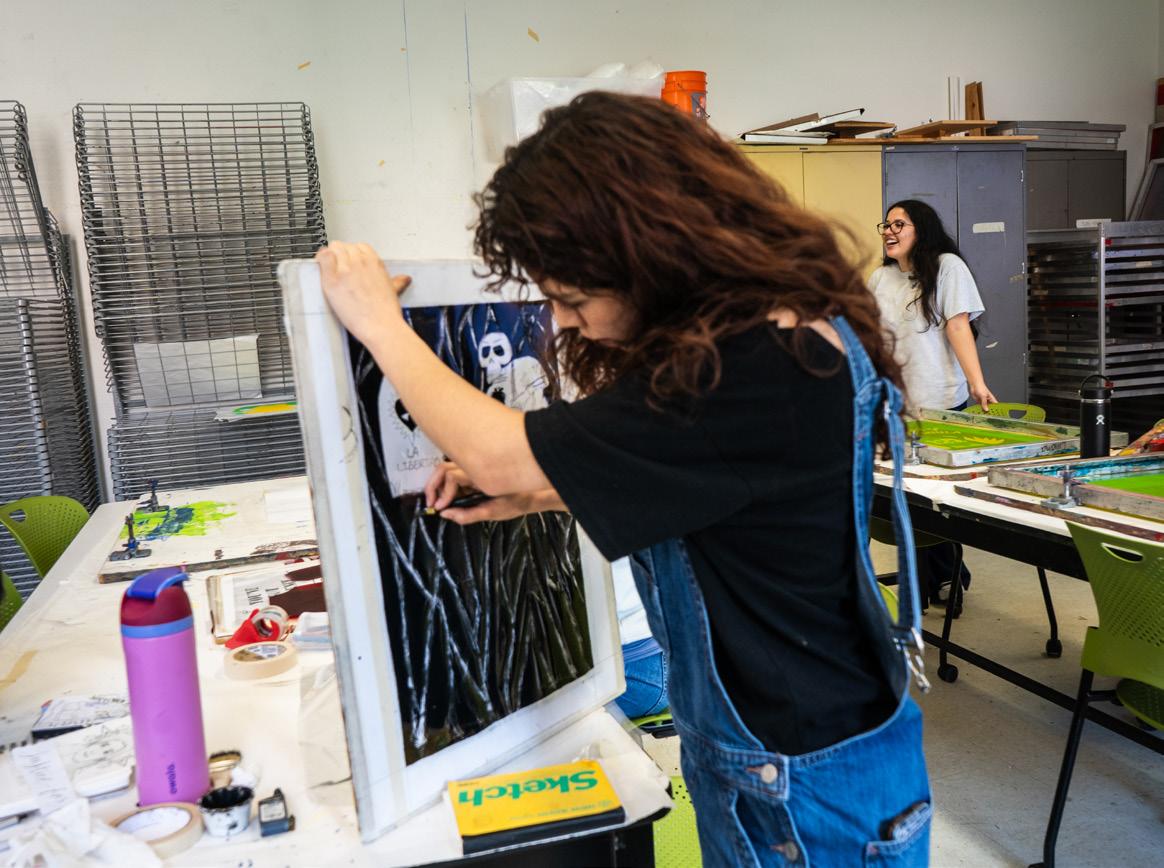
Recently, an executive order under the Trump administration called for an end to federal Diversity, Equity and Inclusion (DEI) programs. In response, the Defense Department’s intelligence agency paused observances such as Women’s History Month, Martin Luther King Jr. Day and Black History Month. Additionally, Google Calendar faced controversy for no longer displaying such observances.
Amidst the cultural backlash to events such as Women’s History Month, some argue that it’s more important than ever to highlight the histories of marginalized communities.
For Cuahtemoc Martinez Marquez, a second-year international relations and psychology double major, events such as Women’s History Month highlight history that is often excluded in the mainstream.
“Even though women make up half the population, people still view men as being the ‘default,’” Marquez said. Tat gets refected in the way people talk about history. History relating to men is just history, while history relating to women is ‘women’s’ history. Women’s History Month is a good reminder to learn about the history that often gets overlooked.”
Tis sentiment was echoed by Karen Gettelman, a Ph.D. candidate at UC Davis, who teaches courses including HIS 072B: Women & Gender in America.
“When I teach regular history, I’ll have one student out of every hundred who writes on my review, ‘Well it’s
“Women have been active in labor movements since there’s been labor,” Gettelman said, particularly noting the strikes by Black washerwomen in
Women’s History Month remains a crucial reminder of the often-overlooked contributions of women throughout history. As discussions around diversity and inclusion face scrutiny, students and scholars emphasize the importance of challenging exclusionary narratives and advocating for a more comprehensive understanding of history.
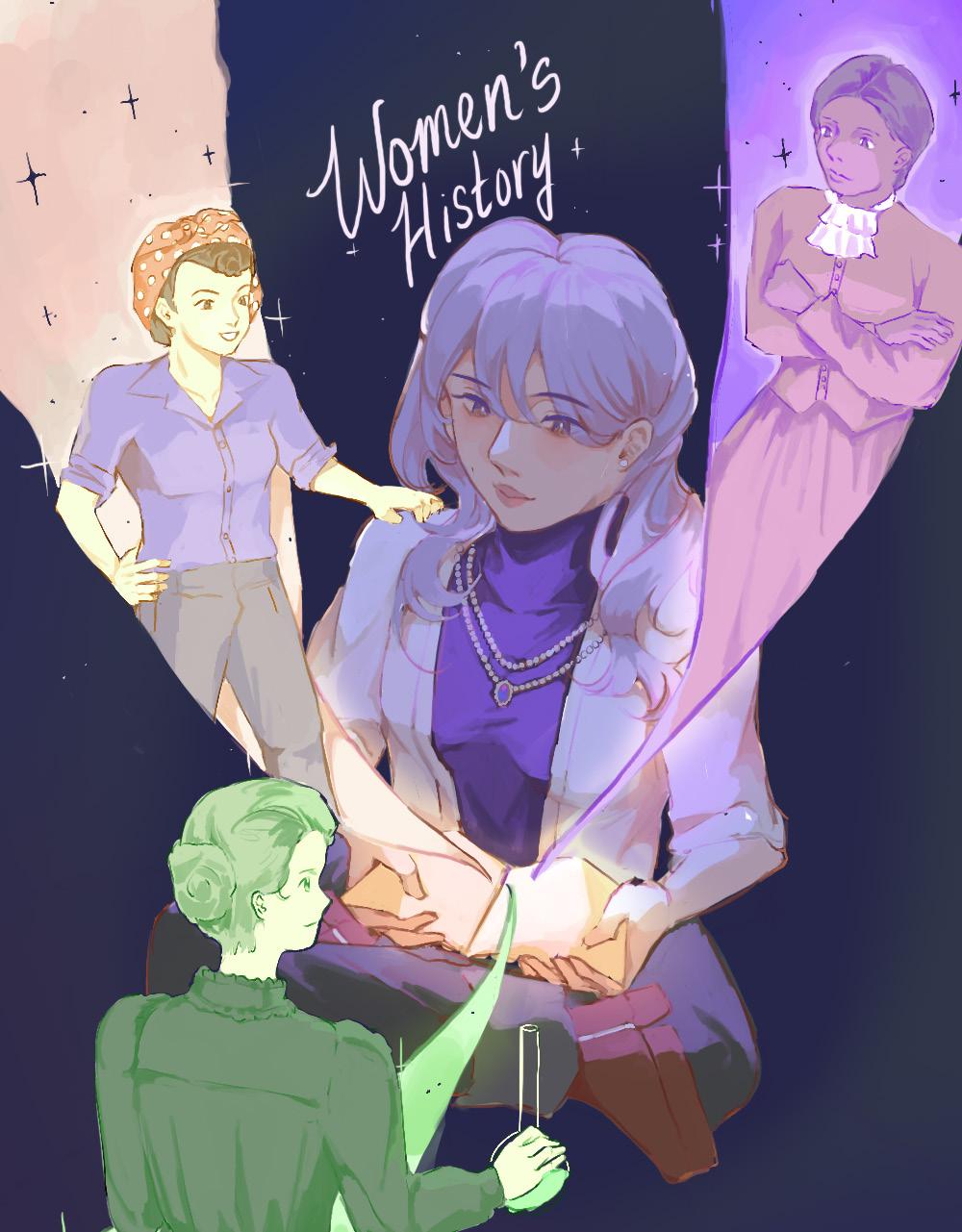
Students share experiences and perspectives from spending a year with cows, sheep and pigs
BY NOAH HARRIS features@theaggie.org
UC Davis is known for its deeprooted connection to agriculture and its wide variety of animals. Davis boasts cows grazing next to student residence halls and wild turkeys walking around campus like they own the place. Te livestock living on campus require constant care and upkeep, allowing UC Davis students the opportunity to live with them and care for them for free.
Students can apply for the ability to live in a barn residency. Te program has nine diferent animal barns to live at, including those with pigs, cows and sheep. Many of these students are in animal-related majors, which is preferred when applying — and everyone must be able to lift a bale of hay. Applicants also have to have a valid California driver’s license.
Guillermo Garibay, a third-year animal science major, discussed the work and commitment needed for barn residency.
“What’s really nice about the program is in exchange for 10 hours of work a week at the facility that you live at, you get free housing,” Garibay said. “Tis includes rent, utilities, electricity, water [and] anything like that, just as long as I meet my 10 hours a week.”
Garibay has had a positive experience in the program so far and shared a tip for potential student applicants.
“You learn so much from it and it only helps you further increase your animal handling experiences and exposes you to veterinary practices,” Garibay said. “If that’s something that you’re interested in, the best way is always reaching out by email.”
All interviewees spoke positively about the experience they have gotten, as well as the benefts of being able to work and interact with professionals in the feld of whichever animals they live and work with.
Jorge Tejeda, a third-year animal science major, lives with the sheep. Tejeda and his barn mates have to check on the sheep at 12 a.m., 3 a.m. and 6 a.m. Currently, lambs are being born, so Tejeda talked through the process he undertakes to care for them.
“If there’s any babies we proceed with the protocols,” Tejeda said. “We
set up their individual pen for the frst couple of days. We lay down the straw, alfalfa grain for the mom. After that, we go ahead and we go to the other barn, where we have older lambs. Ten, we go and take them out to pasture.”
Students sign a housing contract for one academic year and can stay up to two in the same barn before having the option to apply for a diferent barn area.
Mireya Padilla, a second-year agriculture and environmental education major, spoke about her passion for pigs who she works and lives with.
“Coming into Davis, when I joined fall quarter, my frst thing was, one, how do I fgure out where to apply for the Barn Residency, and two, where the heck is a swine unit at this place?” Padilla said. “I just searched it up on Google and then biked out there, made an appointment with the manager, had a little [meeting] with her and I just told her that I want to work with pigs.”
For Padilla, children’s television was an integral part of her love for pigs.
“I found my passion [for] swine, actually, from an episode from Curious George that I watched, where he showed a pig and I was, like, that’s actually kind of cute,” Padilla said.
Almost 500 words within the housing contract signed by barn residents are dedicated to bed bugs. If bed bugs are found in a barn, residents would have to leave their room and infected belongings must be destroyed.
Though all interviewees live at least a mile away from the main area of campus with little housing around them, they all appreciate the isolation.
“I get my own room, I couldn’t ask
for anything else,” Garibay said. “It’s a little far from campus, but I don’t mind. Just last week, I was in charge of feeding. I think on Friday at 5 p.m., I was out with the cows just enjoying the sunset. It’s nice being away from everything and all the urban community that you could say that Davis is.”
While Tejeda loves living in the sheep barn, there was initial hesitation.
“Every morning, like right next to the barn is probably a group of 30 turkeys,” Tejeda said. “So defnitely the frst two, three nights I couldn’t sleep because [for] one thing, you are in the middle of nowhere. You know, if somebody tries to do something to me, what am I going to do?”
For Padilla, living with just a few people in an isolated area has ended up being a wonderful part of her experience so far.
“I just can’t imagine it where I’m not close with my roommates or anything like that,” Padilla said. “We literally do everything together. Tey’re some of my closest friends.”
Tejeda had some words of advice for those looking for housing.
“If you guys want somewhere to live, the sheep barn is the way to go,” Tejeda said.
Spots are limited and competitive for this unique housing opportunity. While applications did close this past December, and the next crop of barn residents will experience what it’s like to live and raise farm animals, there is always next year. Davis is known as the cow town, and perhaps nothing epitomizes that quite like the barn residency.
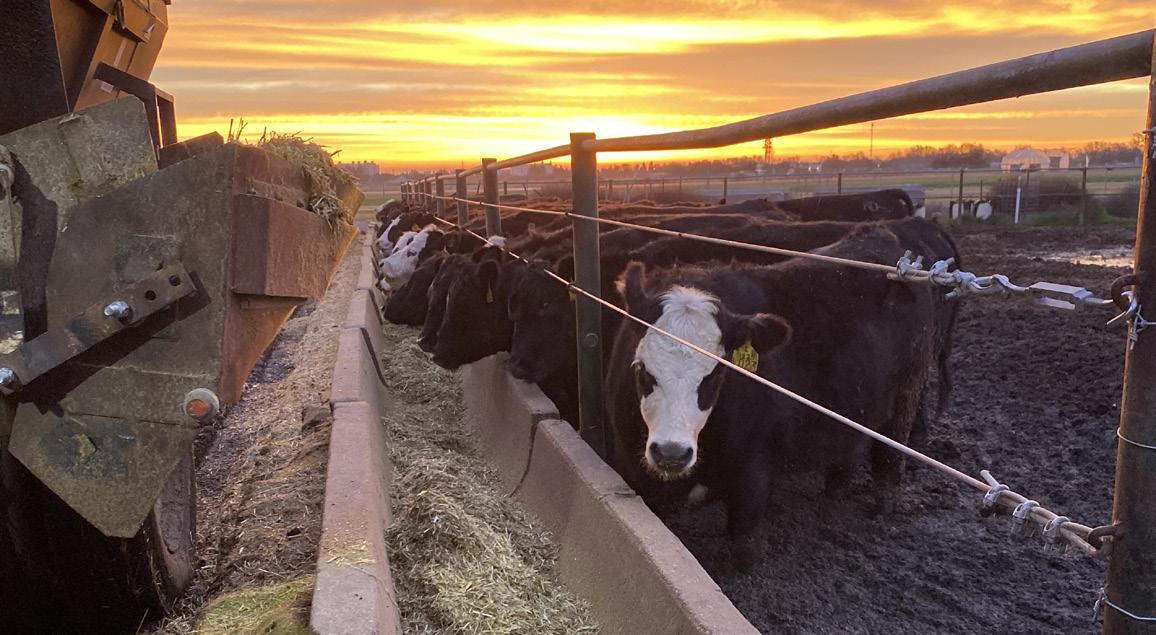


Why is this year’s
Plummeting vaccination rates, decreased funding and lack of personal health accountability may be to blame
WRITTEN BY THE EDITORIAL BOARD
As we wrap up the end of the quarter and endure the last of the rainy months, a lot of us are being greeted with the familiar symptoms of sneezing, coughing and congestion. If you fnd yourself victim to the arrival of the cold and fu season, fear not — you will probably be good as new after a week or two of cozying up at home with a box of tissues. However, you may also notice that things feel diferent this year. Not only are recent illnesses reportedly more intense, but there are many reemerging illnesses making their presence known.
Te 2025 fu season has been deemed one of the most severe in years, with a massive uptick in rates of hospitalizations and outpatient doctor’s visits. Te dominating fu strains this year, which are two types of infuenza A viruses, can quickly mutate and rapidly spread among individuals. Furthermore, vaccination rates are in decline, which means that infections will only continue to proliferate in unimmunized individuals.
Tere is also currently speculation about how accessible vaccines will be
in the future, raising concerns about global health impacts. Although there is not a lot of concrete information available on the topic yet, it is known that United States Health and Human Services Secretary Robert F. Kennedy Jr. has changed the timeline for two upcoming vaccine meetings. Tese meetings, which were set to take place at the U.S. Centers for Disease Control and the U.S. Food and Drug Administration, have reportedly been postponed, and concern about these consequences are amplifed by Kennedy’s apprehensiveness regarding vaccine safety.
Unfortunately, such viewpoints are common; Anti-vaxxers are known for their skepticism about vaccines and frequently use social media as an outlet for spreading misinformation.
Tey often hold beliefs that receiving immunizations can cause adverse health efects or overload the immune system, which may be rooted in cultural, religious or other personal convictions. Tese fears undermine the scientifc evidence that support vaccines’ efcacy and their consequent life-saving impacts. Herd immunity — when there is resistance to disease spread due to enough of a population being immunized — is achieved with the help of vaccines, and the false rhetoric spread by anti-vaxxers disrupts this process, resulting in serious consequences.
Vaccine budget cuts by the U.S. Agency for International Development (USAID) will also impact the spread of illnesses; Te Trump administration is cutting more than 90% of their foreign aid contracts and $60 billion of global assistance from the U.S. Tis will have detrimental impacts on humanitarian eforts worldwide, including the termination of funding for vaccine programs. It’s predicted that without this extra help, there will be an additional annual two to three million deaths from lack of development and administration of vaccinations.
Concerns regarding the severity of the climate crisis and how to stay resilient
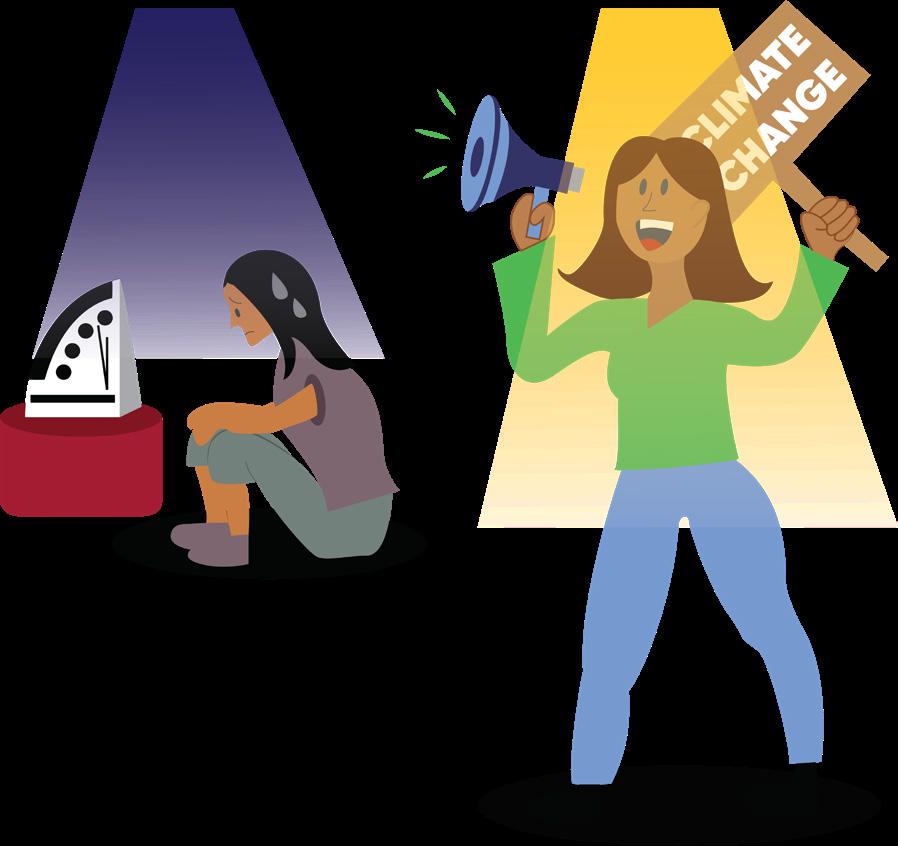
BY ELLIE NOH eenoh@ucdavis.edu
As the efects of global warming increase in severity, their current and future environmental impacts have caused many individuals to experience anxiety about their future. Tis anxiety is further fueled by others’ ignorance toward understanding the efects of the climate crisis, leaving people feeling unheard about their concerns.
The concept of “climate guilt” stems from these emotions, resulting in individuals feeling helpless when they aren’t able to live in a completely eco-friendly way in their day-to-day lives. Tis includes feeling guilty about a purchase from an unsustainable company or having to take modes of transportation that contribute to more carbon dioxide emissions.
Tis slew of negative emotions is also caused by the increase of nihilistic media messages regarding the potential impacts of climate change. Tis can lead individuals to believe that their actions do not serve a positive impact — that it’s “already too late” to help the climate movement. However, this perspective needs to be reevaluated, as these sentiments should instead be treated as motivation to make a diference. From a singular perspective, it might seem that giving up an unsustainable action won’t make a diference, even though that’s not actually the case. From a collective perspective, each individual action can add up and create a larger impact than any singular action can.
An alternative result to the feeling of climate guilt is increased motivation to implement change, rather than feeling increased pressure. For most climaterelated advertising, this is essentially
In recent months, reports about rising cases of measles, tuberculosis and the avian infuenza, also known as the bird fu, have been spotlighted in the news. Treats of a new pandemic are circulating, evoking a sense of déjà vu — March 13 marks the fve-year anniversary of the beginning of the COVID-19 lockdown. Even after half a decade, these efects are lasting; Not only is the virus still spreading, but it has had massive implications on work culture, the healthcare system, the economy and essentially every other aspect of society. We all lived through the COVID-19 pandemic and know about the death tolls, the consequent mental health crisis, the global shutdowns — and we cannot go through that again.
Americans are commonly scrutinized for having an “if it ain’t broke, don’t fx it” mentality when it comes to our health, and you’ve likely heard the phrase that we live like we have free healthcare. It’s easy to not worry about something until we are face to face with the issue, but for the sake of ourselves and others, it is crucial to stay on top of vaccinations and other preventative health measures. It may not seem like your problem right now, but without action, it might be in the near future. On a lighter note, this also highlights the need for self-care. Everyone preaches about how adequate sleep, a proper diet and regular exercise are vital to your well-being and can even decrease your chances of getting sick — while annoying to hear, there is truth to these claims. Te combination of cold weather and looming fnals (and now the news that an impending sickness might not treat you kindly) may not exactly be raising your spirits, but remember that spring is on the way! Keep in mind that with the changing seasons comes a renewed sense of resilience and energy, with brighter, warmer days ahead.
the goal — to create a sense of climate guilt among the masses and initiate an aim to tackle environmental issues.
Some means through which people fuel their motivation include participating in protests, being more cognizant of energy consumption, reposting social media posts as a form of online activism and much more. Besides boosting your morale and motivation, another way to overcome climate guilt is to take a break from overconsuming social media and news articles. Tere are many publications, infuencers and other forms of media that are published with the goal of making the audience feel as though there can’t be anything done in terms of a more sustainable future. When this happens, it is benefcial to practice media literacy and retain a sense of hope rather than dwell on negative news. For instance, there are various articles that cover novel innovations in climate technology, which would provide sustainable alternatives to former carbon-emitting practices. In order to overcome the negative connotations of climate guilt, it is fundamental to realize that each individual action makes a diference.
Without each action, no change can be implemented. Te key to a more sustainable future is to encourage others to incorporate sustainable practices into their individual lives. In the end, it is crucial to remember and acknowledge that every action counts, no matter how impactful you consider it to be — each action is still valuable, as it is a step closer to a greener tomorrow.
Disclaimer: Te views and opinions expressed by individual columnists belong to the columnists alone and do not necessarily indicate the views and opinions held by Te California Aggie.
Editorial Board
CHRIS PONCE Editor-in-Chief
ALYSSA CREVOISERAT Managing Editor
MADISON PETERS Campus News Editor
HANNAH SCHRADER City News Editor
MAYA KORNYEYEVA Opinion Editor
ZOEY MORTAZAVI Features Editor
ANA BACH Arts & Culture Editor
MEGAN JOSEPH Sports Editor
KATIE HELLMAN Science Editor
JENNA LEE Photo Director
ARIANA NOBLE Layout Director
LANHUI ZHEN Design Director
JOANNE SUN Social Media Manager
AARON POTTER Website Manager
CASSIDY GILLIS Distribution & Outreach Director
TIFFANY HE Copy Chief
JENNY DYE Copy Chief
SAMUEL RUIZ Translation Director
ILEANA MERAZ Translation Director
LAURIE PEDERSON Business Development Manager
BY ABHINAYA KASAGANI akasagani@ucdavis.edu
In an age where microtrends permeate every aspect of daily life, allow me to let you in on a secret: You do not need fve iterations of the same thing to feel a sense of joy and there is no “shiny new thing” that will instantly fx all of your problems. Mass conglomerates are lying to you about everything they call “essential” — if it were, in fact, essential, you would be struggling to live without it.
Tis trap is easy to fall into, and I will not fault you for being dazzled by this benevolent sequined slit in the sky which drenches you in style. What is alluring about microtrends is the extent to which they ofer their consumers the illusion of novelty, while at the same time being plagued by eventual obsolescence. We know this and producers know this. But we still bite.
Te microtrend culture is seasonal — being “on trend” is no longer reserved for fashion or tech enthusiasts. Te novelty of microtrends can make you feel as if you are in on the joke when, in truth, the joke is on you. Te consequences of consuming and adopting microtrends without regard for whether or not they are truly necessary for our well-being is what’s dangerous about overconsumption. We purchase, discard and purchase again. overconsumption is unsustainable and clearly influential to cultural homogenization, financial spending, environmental degradation and market saturation.
The very nature of
microtrends is transient. Fashion brands like Zara, H&M and Shein capitalize on the rapid turnover of styles by mass-producing cheap and disposable clothing that eventually ends up in landflls. Te technology sector further perpetuates this cycle of obsolescence by contributing to e-waste. Prioritizing trends over substantive content afects culture at large, trading longevity for instant gratifcation.
What is troubling about this is the extent to which trends dictate personal style, taste and eventual consumption. In this way, cultural homogenization arrests true and effective thought, fattening range and diversity. Local identities and cultures are rendered insignifcant. A monoculture, where aesthetics, ideas and schools of thought are replenished and repeated, leaves less room for innovation. Similarity is rewarded and reward is prioritized.
Te environmental consequences of microtrends are staggering, with brands pedaling rapid product cycles that cause consumer fatigue. Both the fashion and technological sectors tend to be notorious polluters of the environment, responsible for producing nearly 100 billion new garments each year. What trends dictate, the planet bears.
Te market struggles to compete with the demand for microtrends, forcing brands to accelerate their



causing lessened product quality or market oversaturation. Consumers, overwhelmed by the multitude of choices and new releases, struggle to distinguish genuine innovation from cheap imitation. Caught in a cycle of perpetual spending, they sufer from buyer’s remorse, eroded self-worth and fnancial instability all at once. Te pressure to spend in order to avoid the fear of missing out (FOMO) or any lingering feelings of inadequacy that follow, makes consumers feel as if they are obligated to spend — that if they don’t, they will fail to be relevant. The allure of microtrends is understandable — everyone wants to be in the know. Marketed as subcultures, microtrends tend to be removed from the mainstream and considered as having a broader value system. However, the “core-ifcation” of most things commercializes them. Te costs proceed to outweigh the benefts. Supporting sustainable products, along with prioritizing quality over virality, creates an environment that values substance over surface-level appeal. Some microtrends can be useful, but, as consumers, we must make this decision with care and deliberation. Our desire to have the next shiny, new thing is our Achilles’ heel, fashioned into a pair of bright red Louboutins. It is clear that we are yet to learn that moderation is the new excess, and we must work on internalizing
Te views and opinions expressed by individual columnists belong to the columnists alone and do not necessarily indicate the views and opinions held by The California
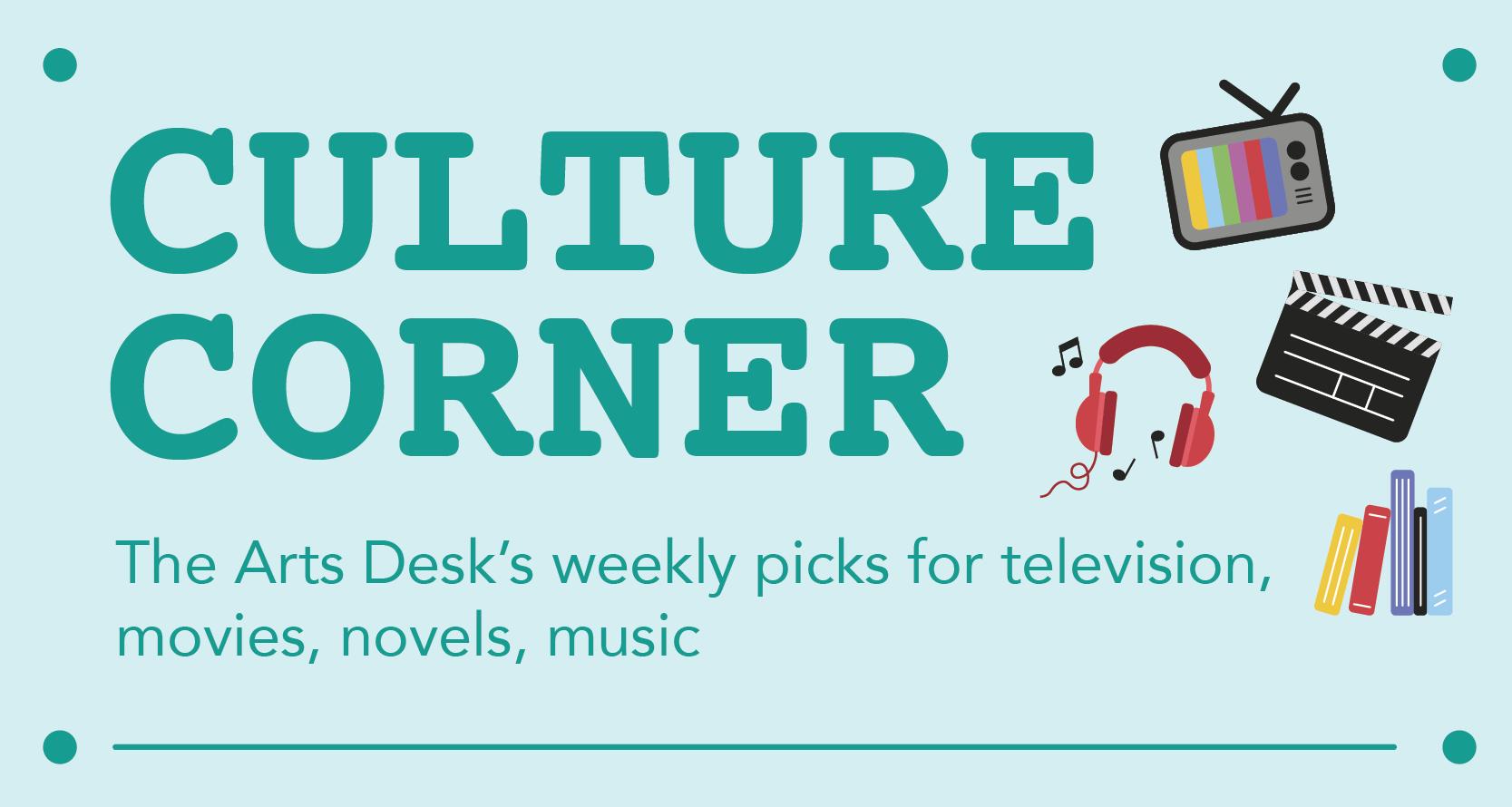
BY ZOEY MORTAZAVI arts@theaggie.org


Album: “Frank” by Amy Winehouse (2003)
Tis album literally changed the game — not only for me, but also just the game in general. Amy Winehouse’s iconic album, “Frank,” should not be a mystery to anyone, but in case it is, I wanted to give it some well-deserved attention. Tis album has it all: slow ballad tracks like “Take the Box,” more upbeat songs like “Amy Amy Amy” and “In my Bed” and somewhere in between, like “Mr. Magic / Trough the Smoke.” No matter the song, Amy’s ability to express heartbreak while taking so much control over her feelings is inspiring and captivating to listen to. Her confdence, unique vocals, musicianship and her incredible range of lyrics is also displayed throughout this album. Her music will always make me feel empowered, and this album is an example of how I feel that in my everyday life. Tis album has also already made an appearance on my KDVS radio show, “Te Red Scare” — and it defnitely will again.
Book: “To the Lighthouse” by Virginia Woolf (1927)
Tis is my favorite book of all time, in case anyone was wondering. Woolf’s stream-of-consciousness prose was a bit intimidating to me at frst as I somewhat struggled to understand the dynamics between characters, but before the end of the frst section (the book is split into three parts: Te Window, Time Passing and Te Lighthouse), I was hooked. Woolf’s characters are incredibly honest and genuine. Te lighthouse is symbolic of what each character desires the most in this world, while they each individually struggle to obtain it. Lily Briscoe’s character is impossible not to root for, and you get to know each character on a personal level as Woolf peers into each of their minds, using a style of omniscient narration that I can’t get enough of. Te book ofers glimpses of beauty within the mundane repetition of daily life, creating moments of literary magic out of seemingly nothing: a candle burning in the dark, an exchanged glance, curtains blowing in the wind. I cannot recommend this book enough; In fact, to commemorate my love for it, I’m planning on getting a lighthouse tattoo. Genuinely.
Song: “Pol” by Googoosh (1975)


Googoosh is one of my favorite Persian singers of all time. Any Iranian person will tell you that she’s one of the all-time greats, so I’m defnitely not alone in my love for her; My dad raised me blasting her songs around the house, so she’s been one of my favorites for as long as I can remember. “Pol,” better known as “Bridge” in English, is particularly special in my opinion — it opens with a hauntingly beautiful violin intro before her vocals start, and the song in its entirety showcases her beautiful voice and instrumentals. Te song explores themes of fnding solace with a loved one amidst feelings of solitude, delving into the deep and intuitive “bridge” that romance can build in one’s life. You defnitely don’t need to understand Farsi (in fact, I’m not even fuent myself) to feel the depth and emotion of the love she is describing in the song. Another song by her that I’ve been obsessed with is “Gole Bee Goldoon,” a favorite that I play at every family reunion my family hosts. Either way, I defnitely recommend giving this song a listen — especially if you’ve been meaning to expand your musical horizons a little bit.
Movie: “Roman Holiday” dir. William Wyler (1953)
I watched this movie with my dad for the frst time in sixth grade, when I was undergoing a serious “I need to be an actor” kick. Audrey Hepburn became one of my ultimate role models after my frst watch — she is so graceful, poised and charismatic in the flm (and all of her flms) that she’s one of the all-time greats to watch. Te movie is fun, funny and the dynamic between Hepburn and Gregory Peck is incredibly enjoyable and gratifying to watch. In “Roman Holiday,” Princess Anne (Hepburn) gets a taste of everyday life beyond her duties as a touring European princess alongside Joe Bradley (Peck), a handsome and witty journalist, who shows her around the city. Peck and his friend end up covering her tour around the city, and their romance blooms as they spend a few days together. Te movie’s bittersweet ending always sticks with me, and it’s one of those feel-good movies that I could (and do) watch time and time again.
Looking back on ‘The Hunger Games’ series in preparation for its upcoming prequel
BY JULIE HUANG arts@theaggie.org
Te long-awaited second prequel to Suzanne Collins’ “Te Hunger Games,” titled “Sunrise on the Reaping,” was released on March 18, promising to tell the story of Katniss’ mentor Haymitch Abernathy as a tribute in the 50th annual Hunger Games. Due to the novel’s prequel status, the ending seems to be a foregone conclusion, but revisiting the earlier books in the series may remind readers of crucial plot points and sharpen the sense of fate that the characters in “Sunrise on the Reaping” are faced with.
“Te Hunger Games” Te book that began the franchise, Te Hunger Games” features the most self-contained plot in the series. Tightly paced and packed with action, it could technically stand alone as a gripping thriller about a group of teenagers who fght each other to the death in a survival arena. However, this frst foray into the games is also tasked with the challenge of introducing readers to the dystopian country of Panem through the mind of the wary and isolated teenager Katniss Everdeen, and it succeeds.
As narrator and protagonist, Katniss is terribly observant of the issues that afect her directly, including the lives of her loved ones. Tis shrewd nature extends to some cutting commentary on the injustice of her society. Yet there’s also much that she’s unaware of, as the oppressive ruling class guard their secrets and play political games. Balancing these political machinations with life-or-death action, “Te Hunger Games” carefully sets up the characters and forces that will come into play in the second and third novels of the trilogy.
“Catching Fire” Having survived the arena together, Katniss and Peeta Mellark leave the physical threats of the games behind and become unwilling political pawns for the Panem government. Katniss especially fnds herself under the yoke of President Coriolanus Snow, as he has threatened to kill her loved ones unless she yields to his will by presenting herself as passive and nonthreatening to the cruel regime. Tis performance requires her to engage in a pretend romance with her fellow tribute Peeta. Collins once again transforms political intrigue into another type of story, this time substituting action for romance until Katniss and Peeta are forced to return to the arena and the stakes are driven upwards once more. As the second book, “Catching Fire”
does an excellent job of transitioning from the thrill of the frst novel to the broader world of the series as a whole, intertwining romance, action and political plotlines in a way that feels all too natural.
“Mockingjay” As the fnale to the original trilogy, “Mockingjay” breaks away from the Hunger Games arena and focuses more explicitly on Katniss’ role as a fgurehead for the growing rebellion against the oppressive government ruled by Snow. As such, the political stakes of the previous novels’ personal entanglements are made more explicit, framed in the context of the political unrest and physical uprisings that concern not just a few people but all of Panem. Te book can be summarized as a collection of bittersweet moments amidst a wave of tragedy. Knowing that “Mockingjay” is the last entry into the main trilogy, and that all of the characters’ fates are fnal, adds a touch of solemnity to the ending while sweetening the rays of hope that Collins leaves for her characters.
T e Ballad of Songbirds and Snakes” Fellow prequel to “Sunrise on the Reaping,” “The Ballad of Songbirds and Snakes” provides the unexpected experience of witnessing the most vulnerable and sympathetic days of Snow’s life, transporting the machiavellian dictator back into his youth when he was an ambitious underdog on a university scholarship. Te prequel reveals that Snow always had a capacity for cruelty, but his family’s poverty and his own lived experiences with hardship seem to justify his ruthlessness somewhat. Collins may be commenting on the idea of villains with sympathetic backstories. As in the main trilogy, she throws a love story into the mix as Snow develops a relationship with the District 12 tribute he is mentoring, the enigmatic and lovely Lucy Gray Baird. However, as in the trilogy proper, this romance is far from conventional or happy. Rather than softening his character, these elements of romance instead complicate the question of whether Coriolanus was always destined to become President Snow.
As the release date has just recently passed, looking back on the events of the earlier books may heighten the anticipation for “Sunrise on the Reaping,” as readers wait to experience the interiority of the beloved but mysterious character of Haymitch Abernathy.

BY ELIZABETH BUNT
arts@theaggie.org
On Wednesday, March 5, the Mondavi Center hosted saxophonist Michael Hernandez as a featured soloist alongside the UC Davis Concert Band and Campus Band, directed by Pete Nowlen and Garrett Rigsby respectively. Led by Hernandez, the bands played a selection of eight pieces, each from diferent composers. Te highlight of the program was the penultimate composition, “Eyes to Look Otherwise” by Juan Sebastián Cardona Ospina, which was both dedicated to and commissioned by Hernandez. Tis concerto was inspired by a painting, “Te Song of Creation” by San Francisco-based artist Tino Rodriguez. Currently based in the Bay Area, Hernandez has been described as one of the fnest soprano saxophone artists of the present generation. He has been heard in concert halls throughout Germany, Switzerland, Poland, France, Holland, Austria, Italy, the United Kingdom, Canada and the United States. Hernandez has also held residencies at dozens of music festivals, including Bravo! Vail Valley Music Festival, Hot
National
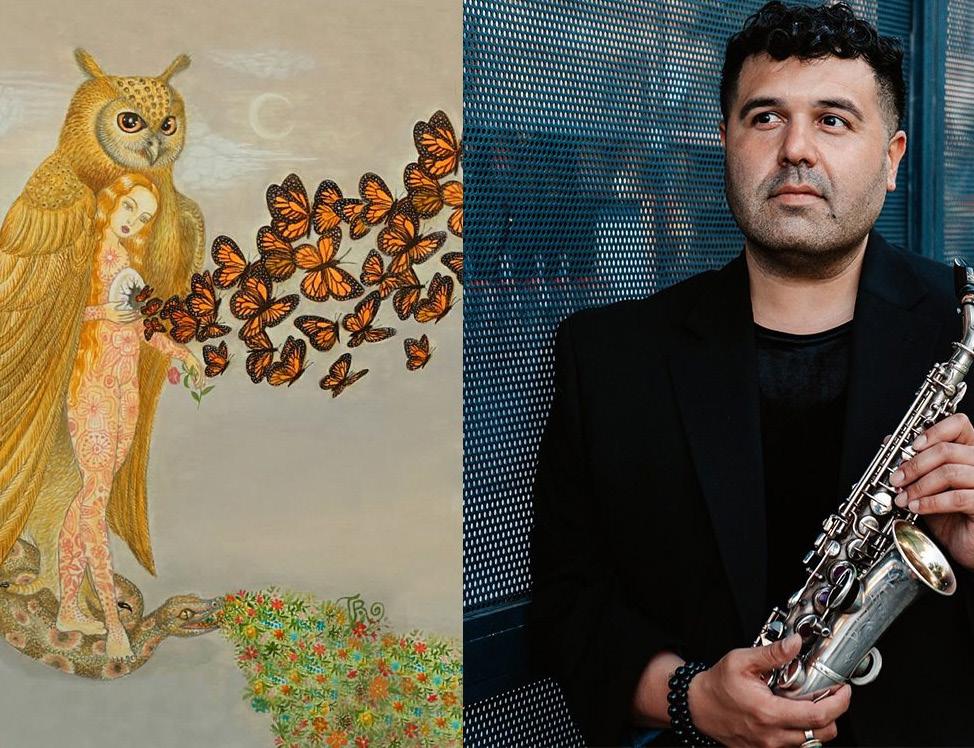
Latinx artists, their art and the stories of the artists who
“In
Enter digits from 1 to 9 into the blank spaces. Every row, column and 3x3 square must contain each digit. Each Sudoku has a unique solution that can be reached logically without guessing.
Answer to previous

FROM
“UC must – and will be expected to – continue to advance equal opportunity and combat discrimination in all forms in alignment with federal and state law and University nondiscrimination policies,” the statement reads. “UC will continue to take steps to ensure safe, inclusive and respectful UC communities for all groups. Tis includes developing programs and services that support a healthy campus climate, reinforce our values and bridge and improve intergroup relations in order to enhance overall employee and student experience, safety and wellbeing.”
FROM FRONT COVER
They simply can’t, at least not smoothly,” Hale said. Without proper stafng, Hale said that parks could sufer from increased litter, vandalism and degradation, ultimately harming biodiversity.
“With less and less care and less and less upkeep, species [of] animals, insects, plants and fungi will be lost, and ultimately, climate change will get worse,” Hale said.
Hale also highlighted the personal impact of these cuts, refecting on how
national parks serve as crucial escapes from urban life.
“It can be hard living in a city without nearby, convenient natural seclusion, especially because I feel like I crave it all the time,” Hale said. “National parks aren’t close and convenient to me to feed my hunger for nature, though I know that it feeds others. Even if I didn’t care about nature, why would I want to take that away from somebody, especially if it’s their job?”
The impact of these decisions extends far beyond individual livelihoods and visitor experiences and could potentially exacerbate environmental degradation at a time when climate concerns are already at an all-time high.
Marco Rivas, a second-year biology major, expressed his concerns about the long-term efects of reduced stafng on conservation eforts.
“National parks protect so many endangered species, and without enough staf to monitor and maintain their habitats, we could see serious declines in wildlife populations,” Rivas said. “It’s frustrating to see policy decisions that don’t consider the bigger picture.”
As national parks brace for the infux of visitors this upcoming summer, the loss of staf could have serious consequences for both conservation efforts and public enjoyment. The debate over these cuts highlights a broader tension between our country’s focus on economic policy and environmental stewardship, which many argue could leave our national parks in serious jeopardy.

The Aggies continue to search for their first win of the season
BY THEO KAYSER sports@theaggie.org
Te UC Davis women’s lacrosse team traveled to Los Angeles on Feb. 21 to face of against the University of Southern California (USC) for their third game of the season.
Te Aggies put up a good fght against an intimidating opponent — USC entered the game coming of of a win against No. 21-ranked University of Colorado — but nonetheless left with a 7-12 loss.
Te game began with a quick goal for USC, allowing them to take a 1-0 lead just over two minutes into the frst period. UC Davis promptly responded with a goal of their own, as Ella Brislin, a fourth-year political science and history double major, scored her frst goal of the game.
Just a few minutes later, Alex Agnew, a cognitive science graduate student, gave the Aggies their frst lead of the game with a goal of her own as just under nine minutes were remaining in the frst period.
Te following eight minutes had both teams go scoreless before USC tied the match at 2-2 as the period was winding to a close.
Next, UC Davis retook the lead for the fnal time in the game after Jane Fox, a frst-year undeclared major, scored an unassisted goal to make the score 3-2.
Te momentum of the game then very abruptly changed hands, as USC went on to score three consecutive goals within a 90-second window, leaving them with a 5-3 lead with seven minutes remaining in the frst half.
To bring the frst half of the game to a close, Brislin scored her second goal, drawing the score within one for UC Davis. After the back-and-forth during the
frst two periods, the game started to ramp up for the Aggies. After entering the third period ahead by a score of 5-4, USC extended that lead in the opening minutes of the half all the way to 10-4, scoring fve unanswered goals across a 10-minute stretch. For the Trojans, this was largely due to teammates Reese Robinson and Maddie Dora who scored two goals each.
With 30 seconds remaining in the period, UC Davis fnally re-entered the scoring column after Grace Gebhardt, a fourth-year design major, scored a goal, making the score 10-5. USC kept their foot on the gas, though, and scored another goal with just two seconds remaining in the period. In totality, the third period saw USC score six goals compared to just one by the Aggies, ending with the score sitting at 11-5 in favor of USC.
Te Aggies entered the fnal period of the game in search of a miraculous comeback. Although the closing 15 minutes did see the Aggies outscore their opponent 2-1, it was not enough as USC left with the victory. Both goals in the period were scored by Gebhardt, adding to an impressive half, which saw her score all three goals for the team.
UC Davis’ ofensive output was well distributed throughout the game, as four players contributed to the team’s seven goals. On the USC side, the show was undoubtedly stolen by Dora, who led the team with six goals.
In the first, second and fourth periods combined, UC Davis and USC tied with six goals each. In the end, the deciding factor was the dominant third period by USC.
With the loss, UC Davis dropped to a 0-3 record on the season. After searching for their frst win of the New Year, hosting the University of Oregon on March 1, the UC Davis Aggies earned their frst win with a fnal score of 20-15.
UC Davis researchers invent a new method for maintaining the efficiency of platinum catalysts
BY EKATERINA MEDVEDEVA science@theaggie.org
If you have taken an introductory chemistry course before, then you have probably heard of catalysts — compounds that lower the amount of activation energy needed for a reaction to occur by o f ering an alternative pathway. As a result, the process is faster and more energy-efcient.
Catalysts are essential in a diverse range of industries that involve working with chemical reactions: petrochemicals, pharmaceuticals, food production, energy — you name it.
“Approximately 90% of all commercially produced chemical products rely on [catalysts],” an article released by Topsoe, a large Danish company specializing in catalysts and other technologies aimed at decarbonization, reads.
So, the more efcient the catalysts are at their job, the better it is for everybody. Recently, a UC Davis research group led by Professor Bruce Gates in the Department of Chemical Engineering conducted a study that resulted in the development of a nanoscale con fnement strategy for platinum (Pt) cluster catalysts.
The study is co-authored by a postdoctoral UC Davis fellow, Yizhen Chen, and Jiankang Zhao of the School of Materials and Energy at the University of Electronic Science and Technology of China, Chengdu, People’s Republic of China. Tis research signifcantly improved the efciency of the platinum cluster catalysts under harsh conditions of reducing hydrogenic reactions “at temperatures of ≤600 °C and atmospheric pressure.”
“Most catalysts that are used to make industrial products are solids and a lot of them are used at high temperatures, so they have to have ‘stability,’” Gates said. “Usually, 99% plus of [the catalyst] is [composed of] material that’s not very expensive but has a lot of internal surface area due to being porous, like Swiss cheese. Tese tiny pores provide platforms or sites for
the expensive component in a catalyst, [one type of which] are noble metals [such as] platinum, palladium and rhodium. Platinum costs about $1,000 per ounce, palladium costs about the same and rhodium costs much more. So, the catalyst design needs to be getting the biggest bang for the buck from the expensive components.”
Te biggest problem with noble metal catalysts that the team addressed is that they are prone to moving around on the porous support and sintering, or agglomerating, into larger particles under practical reaction conditions, which may involve temperatures of up to 800°C. Tis results in a reduction of their surface area for interacting with reactants, which, in turn, causes a drop in efciency of the reaction.
“We devised a confnement strategy that anchors each [atom-precise lownuclearity Pt] cluster onto an individual cerium oxide (CeOx) nanoisland, forming isolated nanoreactors that are highly dispersed on a high-surfacearea porous silica (SiO2) support,” the research brief reads. “Tis design prevents cluster migration and aggregation under harsh reducing conditions.”
Te experiments for the diferent parts of the study, such as determining the structure and function of the new catalysts as well as testing them
under hydrogenic catalysis, were done in numerous places, including the laboratories of Bainer Hall at UC Davis and the Stanford Linear Accelerator Center (SLAC) laboratory.
Te key experiments were done by [our] colleagues in China,” Gates said. “[Tis study] is a collaborative work involving [a lot of] people and many diferent institutions. Tat’s how [a lot of] science gets done these days — it’s networking, it’s teamwork, it’s fguring out who can bring what skills to the party and then trying to coordinate the work so that everybody is on the same page, communicating efectively and collecting the information needed to move the science forward.”
The study continues to be developed, primarily by researchers in China who have been involved in this groundwork.
“We have been working with catalysts that are similar to the ones described in the publication, but modifed in ways that change their properties,” Gates said. “We’d like to think that the work in that publication and in the publication that preceded it in the journal Nature opened some valuable new territory. Now I think it’s fair to say that the follow-up work is consolidating and defning the new territory better.”

UPTE-CWA 9119 and AFSCME Local 3299, representing 50,000 workers combined, will strike across all UC campuses over alleged bad-faith negotiations, staff shortages and increased healthcare premiums
BY KHADEEJAH KHAN campus@theaggie.org
Two major unions representing over 50,000 University of California workers will hold a one-day strike on April 1 across all UC campuses over alleged unfair labor practices.
Te University Professional and Technical EmployeesCommunications Workers of America (UPTE-CWA) 9119, representing research and technical workers, were frst to announce their strike on March 21. In their announcement, they cited unfair labor practices including increased health care premiums and a “crisis of recruitment and retention.”
“We’ve brought proposals to the table for safe stafng, career
progression, work/life balance, fair pay and job security but have been met with bad-faith bargaining and unfair labor practices from UC,” UPTE said in a statement. “Enough is enough — Californians deserve better.”
Te American Federation of State, County and Municipal Employees (AFSCME) Local 3299, representing over 37,000 service, patient care and skilled crafts workers, announced that they will strike in solidarity with UPTE, marking the third time the two unions have gone on strike in the last four months.
Most recently, AFSCME 3299 and UPTE-CWA held a UC-wide strike from Feb. 26 to 28 where workers voiced many of the same concerns. At UC Davis, hundreds of workers from both unions participated. Tey had previously demonstrated in late
November regarding their stalled contract disputes.
“Like us, [UPTE-CWA 9119] have been afected by UC’s bad-faith bargaining, which has been preventing them from reaching a fair and just contract,” AFSCME 3299 said in a statement.
In a statement made by the UC on March 21, the university says it has ofered “strong” proposals to both unions and that the strikes may lead to fnancial pressure on the UC.
“At a time when the University of California is facing funding reductions at both the state and federal levels and preparing for signifcant fnancial challenges ahead, we are concerned about UPTE and AFSCME’s plans to strike again,” the statement reads.
“We’re still committed to open dialogue and hope we can resolve these
issues quickly to minimize disruption for our entire University community.”
Instruction, patient care, research and other campus activities will continue to proceed without disruption, according to a UC Davis spokesperson. For the duration of the strike, Latitude Restaurant, Scrubs, Te Gunrock, Spokes and the meal card ofce will be temporarily closed. At UC Davis, the unions plan to picket at La Rue Road and Hutchison Drive, in addition to the UC Davis Medical Center in Sacramento.
Te strike was announced immediately after the March 17 to 19 Regents meeting at UC Los Angeles, where members of both unions protested unfair labor practices, including staf shortages and bad faith negotiations. Protesters were met with UCPD ofcers in riot gear.
Additionally, AFSCME 3299 criticized the recently announced UC systemwide hiring freeze as an “institutional failure” that they claim will exacerbate already existing staf vacancies, one of the union’s major concerns, in a statement.
AFSCME 3299 has previously stated their belief that staf vacancies are linked to a decline in real wages and the housing crisis “plaguing the university’s frontline workforce,” causing members to commute from long distances or sleep in their cars — issues they hope their strike will address.
Tis is a developing story. Check back for more updates.
